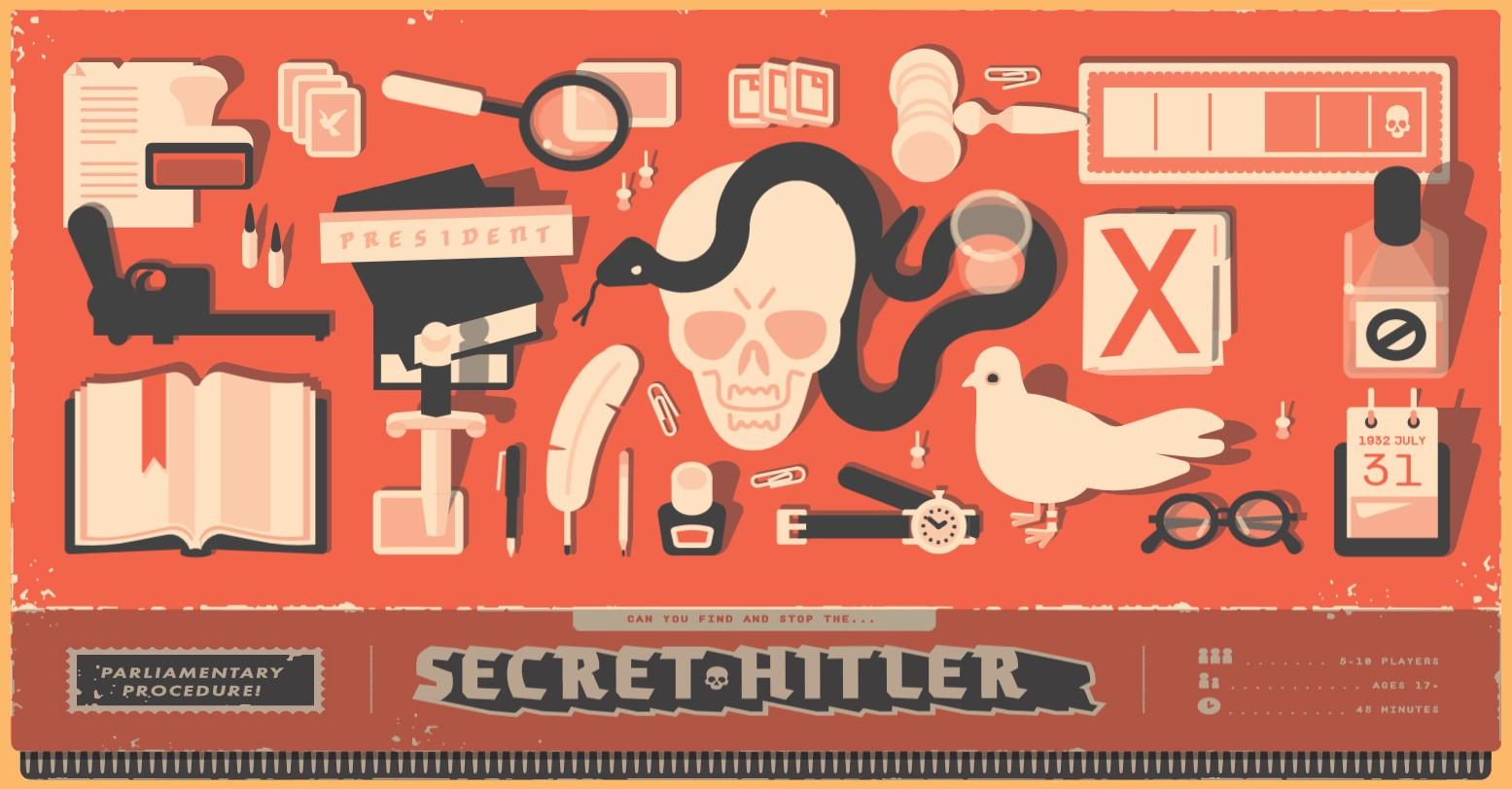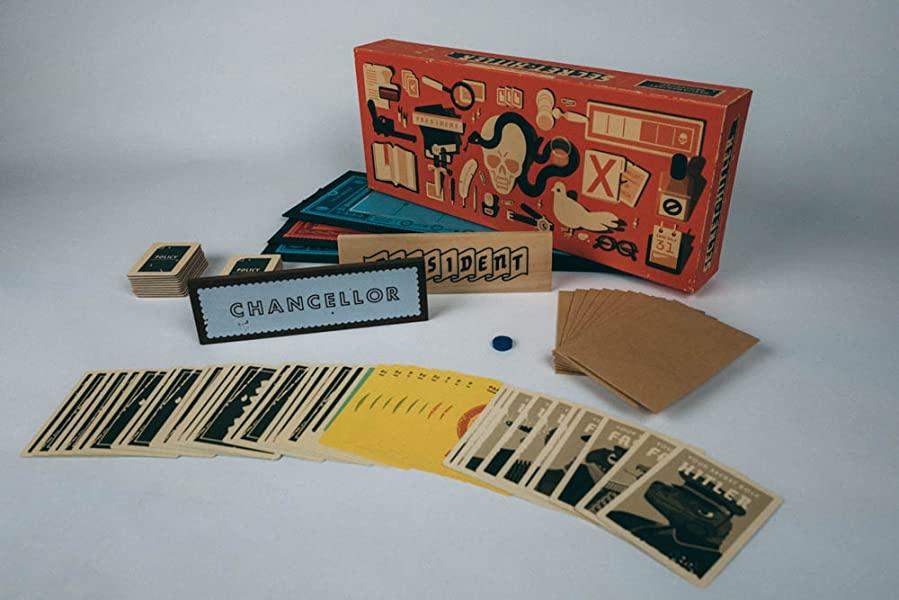
Name of Game: Secret Hitler
Creator of Game: Max Temkin, Mike Boxleiter, Tommy Maranges
Platform: Physical board game, also available on Tabletop Simulator and online at secret-hitler.com
Target Audience: The game is recommended for ages 17+ and is intended for 5-10 players. It is marketed as a “social deduction” game and is popular among fans of board games and strategy games.
Notable Elements:
- Players are randomly assigned roles as either Liberals or Fascists, with one player secretly being the “Hitler” character.
- Players take turns as the President and the Chancellor, who work together to pass policies while trying to prevent the Fascists from gaining too much power.
- Rounds are divided into two phases: the Policy Phase, where the President and Chancellor pass policies, and the Investigation Phase, where players can investigate each other and use their abilities to gain information and influence the game.
- The game also features player powers, special events, and a deck of “Fascist” policies that can be used to manipulate the game.
- Types of Fun!
- Strategic Fun: One of the most enjoyable aspects of “Secret Hitler” is the strategic gameplay. Players must constantly be thinking about how to advance their agenda while also trying to identify the roles of their opponents. This type of fun comes from the challenge of trying to outsmart and outmaneuver other players.
- Social Fun: “Secret Hitler” is a game that requires players to interact with one another and form alliances. This type of fun comes from the social aspect of the game, as players try to convince others to trust them or vote for their policies.
- Surprise Fun: The game involves hidden roles, which means that players can be surprised by the reveal of someone’s true allegiance. This type of fun comes from the excitement of not knowing who to trust and being surprised by unexpected twists.
- Creative Fun: The game can also be a creative outlet for players who enjoy roleplaying or improvisation. Players can create unique personas for their characters and engage in creative storytelling to convince others of their innocence or guilt.
- Last but not least, some formal elements: players, board, cards (policy cards, role cards, action cards), tokens (ballot tokens, election tracker tokens, executive action tokens), gameplay/rounds, policy deck (Liberal Policies, Fascist Policies, and the Secret Hitler card), role cards (Secret Hitler, fascist, liberal), election tracker, executive action cards, president & VP.

Compare & Contrast:
Secret Hitler is often compared to other social deduction games like Werewolf and The Resistance. What sets it apart is the use of roles and the division of players into two teams, rather than just having one team trying to deceive the others. It also has a more structured gameplay and clear objectives for both teams, which can make it easier to understand for new players. However, it can also be more predictable and less flexible than other games in the genre.
Was the game fun? Why or why not? Moments of particular success or epic fails in my opinion:
The game was very fun, especially when played with a group of friends who enjoy strategy and deduction games. I think it would be even more fun with the physical version. Moments of success come from successfully passing Liberal policies or rooting out Fascist players, while epic fails can come from accidentally electing Hitler as Chancellor or making a wrong accusation.

Things I would change to make the game better…
Some players have criticized the game for being too repetitive or predictable, and some have suggested adding more variability to the game’s mechanics or roles. Others have suggested adding more ways for players to interact or negotiate with each other, rather than just relying on the card mechanics. Here are half a dozen improvements (imho) that the creator of Secret Hitler could implement:
- Implement a tutorial mode for new players: While Secret Hitler is a fun and engaging game, it can be a bit overwhelming for new players. To address this, the game designer could consider implementing a tutorial mode that walks players through the basics of the game, explaining each role, and how the different game mechanics work.
- Increase the number of roles: While the current selection of roles in Secret Hitler is interesting, adding more roles could make the game even more complex and engaging. This would allow for more varied strategies and gameplay experiences.
- Add more randomness to the game: The game is based on deception and intrigue, but adding more randomness to the game could create even more tense and thrilling moments. For example, the game designer could consider introducing random events that affect gameplay or adding more randomized elements to the role selection process.
- Address potential issues with player elimination: In games like Secret Hitler, players can be eliminated early on, leaving them with nothing to do for the remainder of the game. This can be frustrating for those players and make the game less enjoyable. To address this, the game designer could consider implementing alternative win conditions or ways for eliminated players to continue participating in the game.
- Increase the number of players: Secret Hitler is a great game for smaller groups, but expanding the player count could make the game even more exciting. Adding more players would allow for more complex strategies and could lead to more intense gameplay moments.
- Improve the balance of power between the roles: Some roles in Secret Hitler are more powerful than others, which can make the game feel unbalanced at times. To address this, the game designer could consider tweaking the powers of certain roles or introducing new roles that balance out the existing ones.



